Greek Jewelry
The conquests of Alexander the Great marked a pivotal juncture in the evolution of Greek jewelry, ushering in a period of dynamic cultural exchange and innovation.

Ancient Greek artisans, exposed to new styles and materials from distant lands, embarked on a journey of creative exploration that left an indelible mark on the craft. The tradition of gemstone carving, rooted in the influences of Minoan art on mainland Helladic culture, flourished with newfound vigor during the Hellenistic period, attaining unprecedented levels of subtlety and refinement. This era witnessed the emergence of exquisite pieces characterized by intricate designs and masterful craftsmanship, reflecting the rich tapestry of cultural influences that defined the Hellenistic world.
Wreaths
Greek jewellery encompassed a remarkable diversity of forms, including the exquisite and delicate gold wreaths that adorned the heads of wearers. These intricately crafted pieces, designed to mimic the graceful forms of plants, exemplified the artistry and ingenuity of ancient Greek artisans. Worn as symbols of status, beauty, and divine favor, these wreaths served not only as adornments but also as potent expressions of cultural identity and aesthetic refinement. With their meticulous attention to detail and graceful elegance, these gold wreaths captured the essence of nature’s beauty, elevating the art of jewellery to new heights in the ancient Greek world.
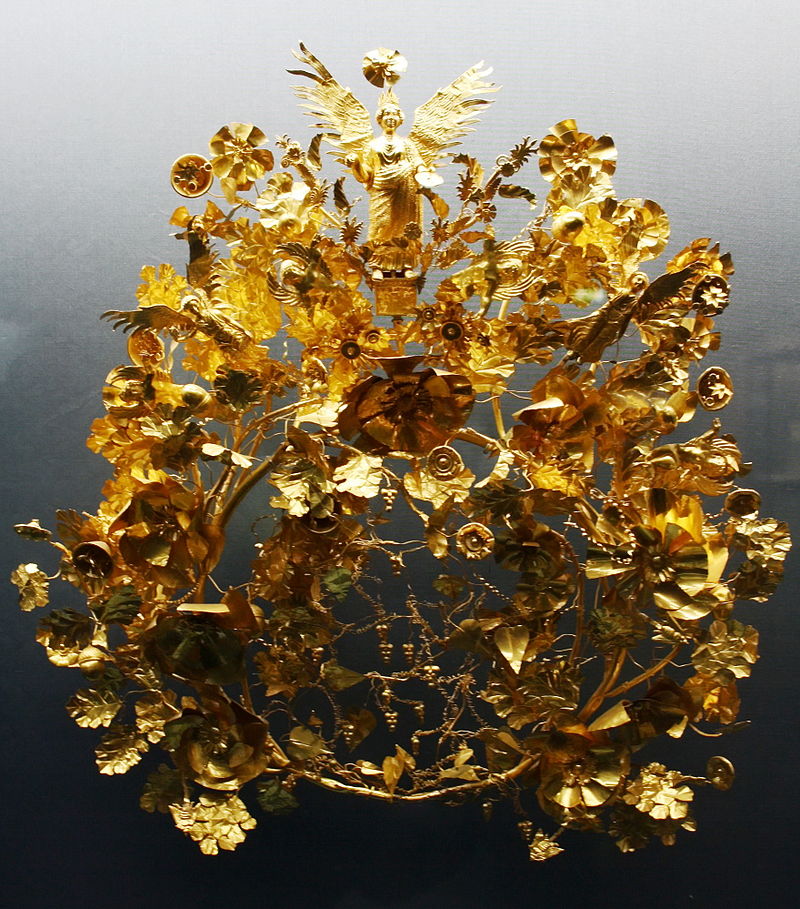
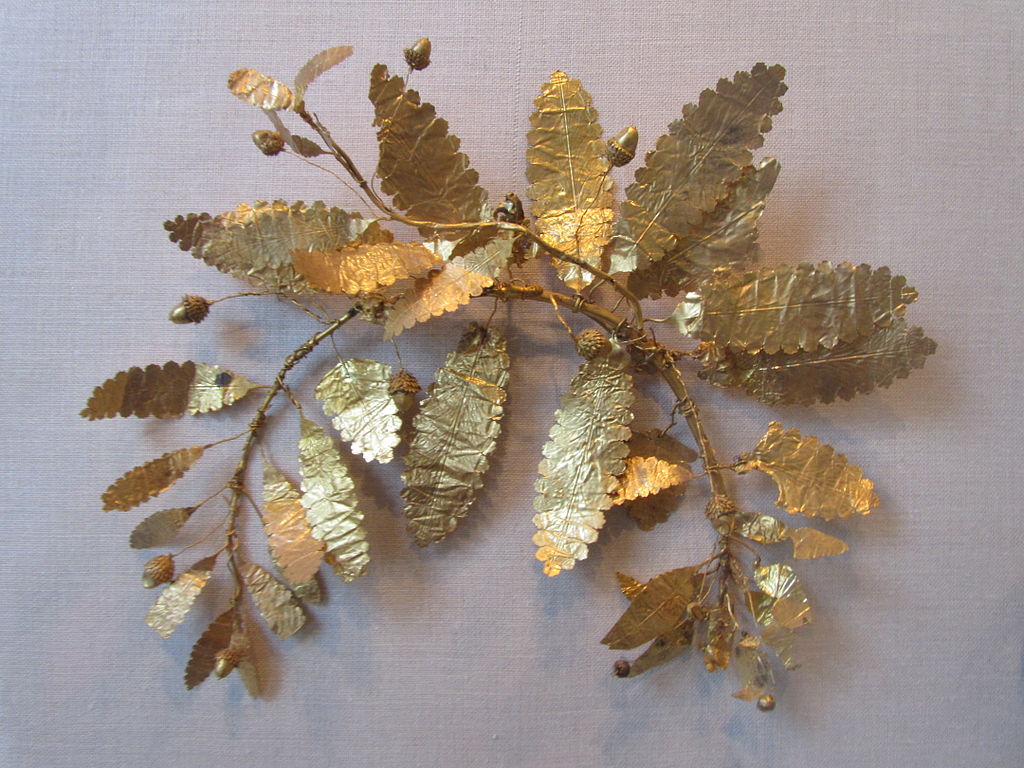
Intaglios
Intaglios, meticulously crafted gemstones with intricate negative reliefs, were prized luxury items in Ancient Greece. The art of gemstone engraving flourished as skilled artisans meticulously carved intricate designs onto precious stones.

These exquisite intaglios adorned necklaces and rings, serving as symbols of wealth, status, and artistic sophistication. With their finely detailed motifs and masterful craftsmanship, these gemstone treasures not only showcased the technical prowess of ancient Greek lapidaries but also epitomized the elegance and refinement of Greek jewelry design. As cherished personal adornments, intaglios reflected the aesthetic tastes and cultural values of their owners, offering a glimpse into the opulent world of ancient Greek society.
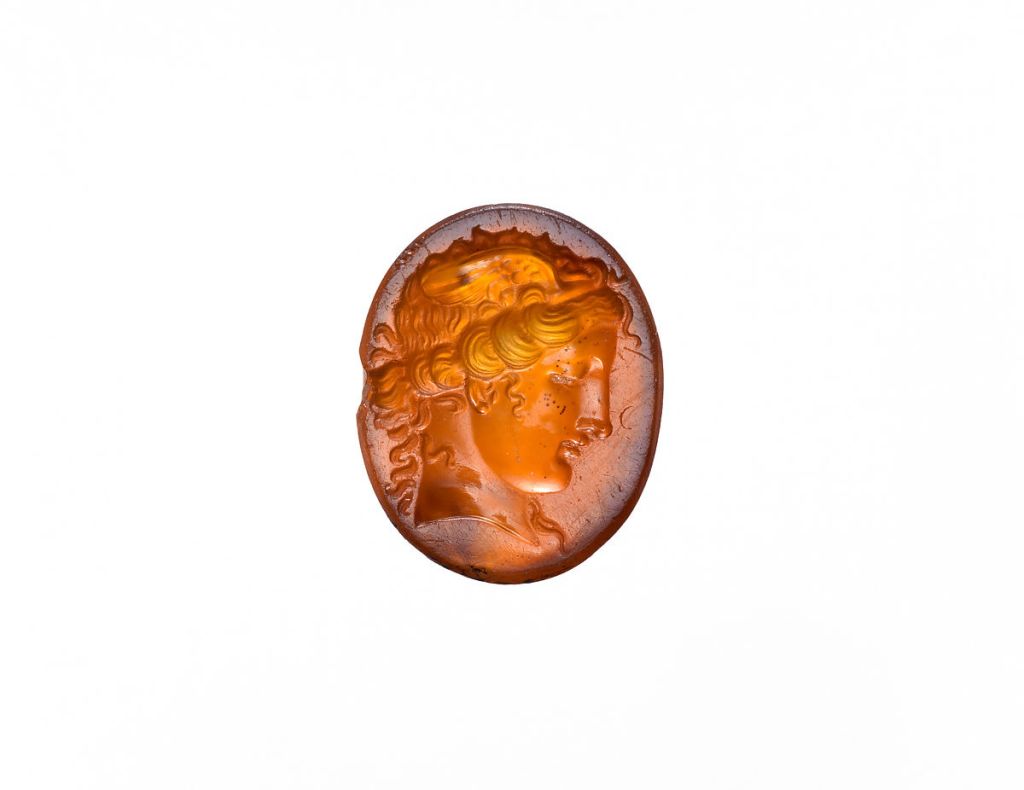
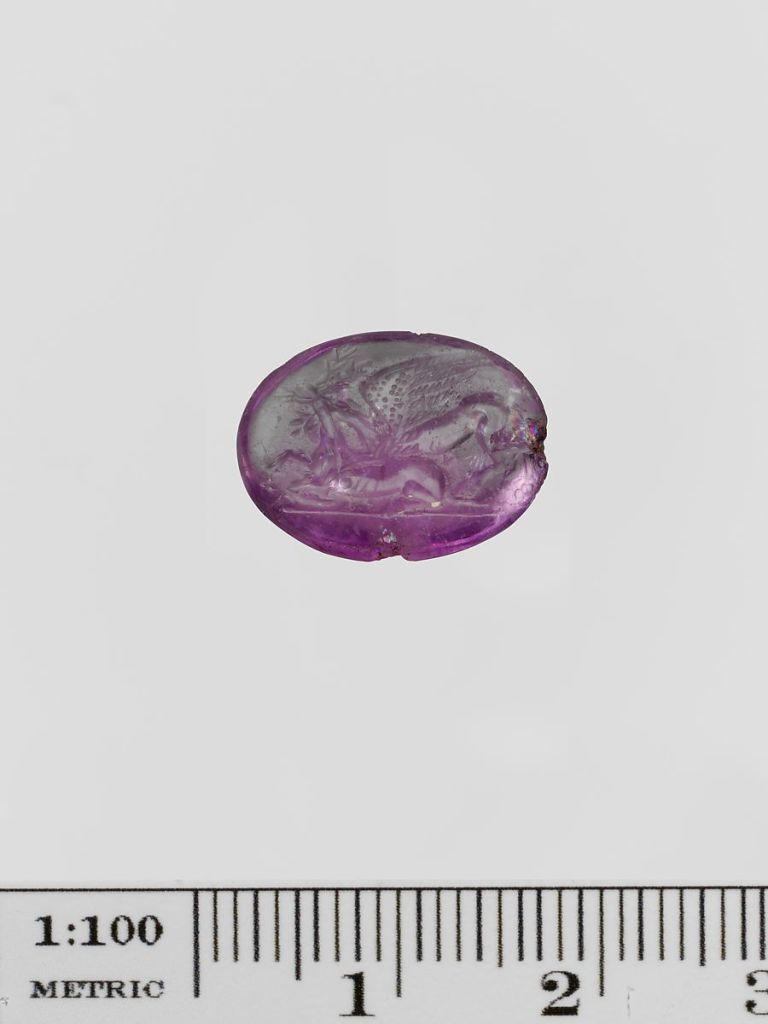
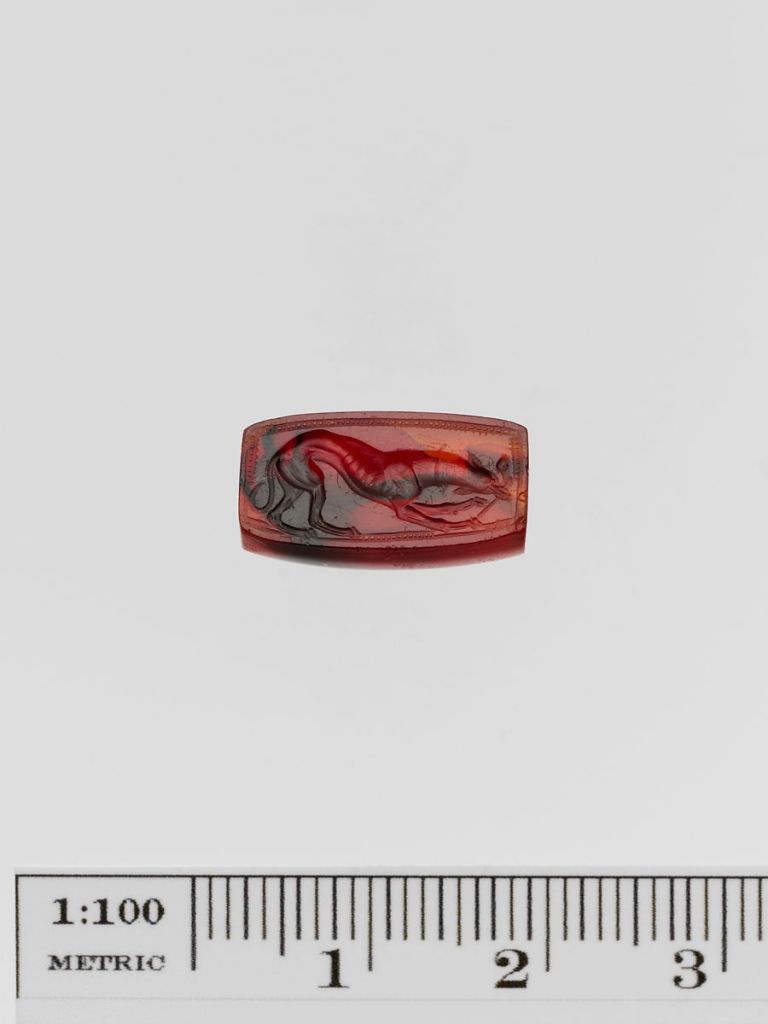
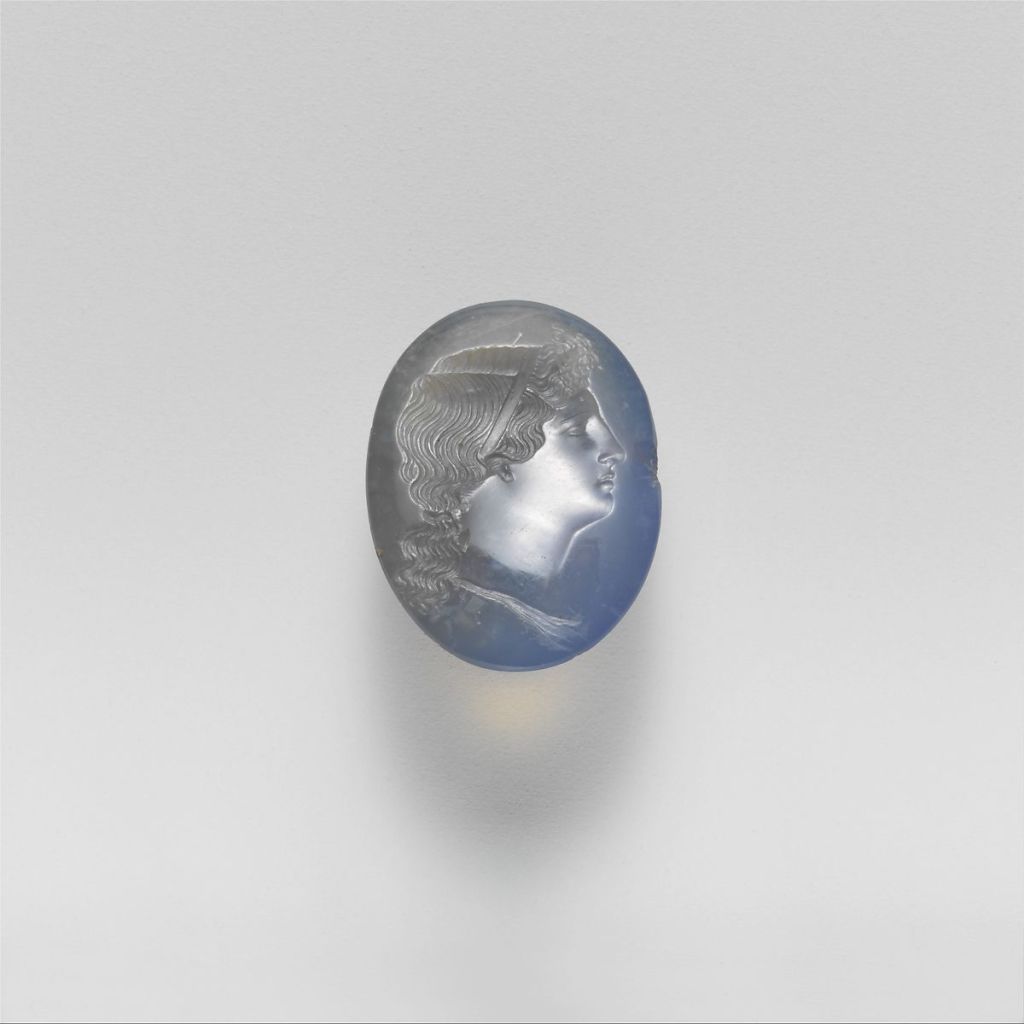

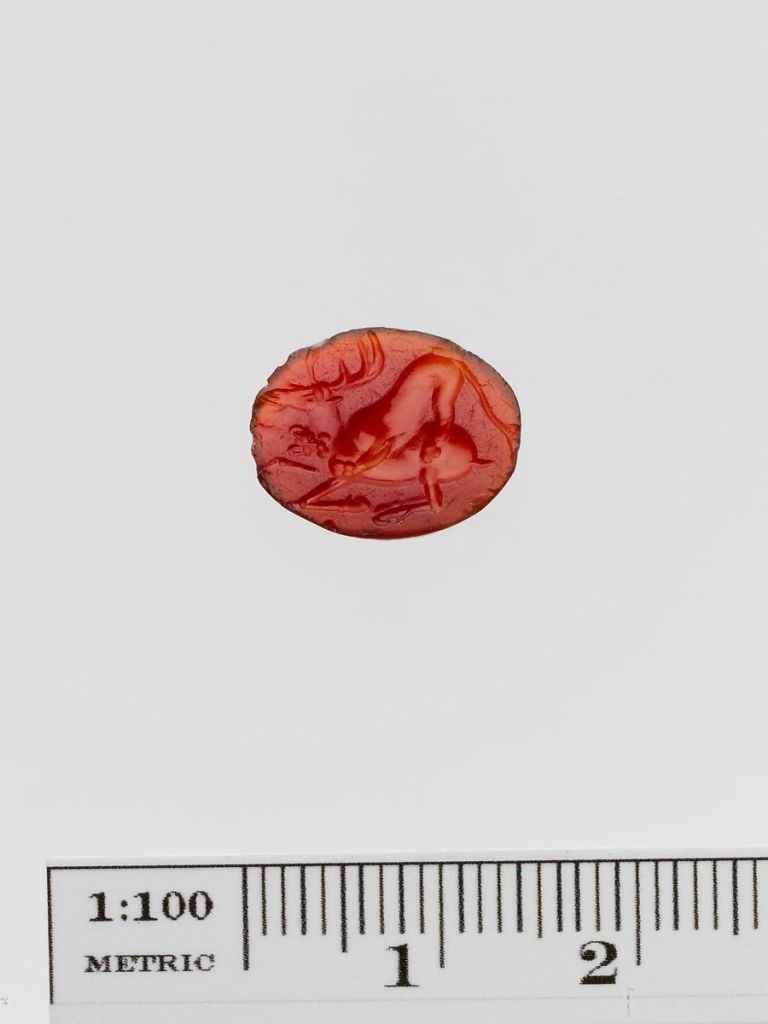
2. Amethyst intaglio of a griffin attacking a deer, 4th c. BC. Metropolitan Museum of Arts.
3. Carnelian intaglio of dog chewing a bone, 5th c. BC. Metropolitan Museum of Arts.
4. Chalcedony intaglio of a woman, 2nd c. BC. Metropolitan Museum of Arts.
5. Banded agate intaglio of Dionysus, 4th-3rd c. BC. Metropolitan Museum of Arts.
6. arnelian intaglio of lion attacking a deer, 4th c. BC. Metropolitan Museum of Arts.
Cameos
Cameos, intricately carved gemstones with raised relief designs, made their way to Ancient Greece around the 3rd c. BC, coinciding with the expansion of trade routes following Alexander the Great’s conquests. These exquisite pieces, prized for their artistic beauty and craftsmanship, adorned jewelry and other personal items, reflecting the refined tastes of the elite.

Despite their popularity in ancient times, only a handful of cameos from this period have survived to the present day. Nonetheless, these rare artifacts provide valuable insights into the artistic techniques and cultural exchanges that characterized the Hellenistic world, underscoring the significance of cameos as enduring symbols of ancient craftsmanship and aesthetic sophistication.

Bracelets & Armbands
Ancient Greek bracelets and armbands were not just decorative accessories; they also held significant cultural and symbolic meaning in Greek society. These adornments were crafted from various materials, including gold, silver, bronze, and sometimes even precious gemstones.
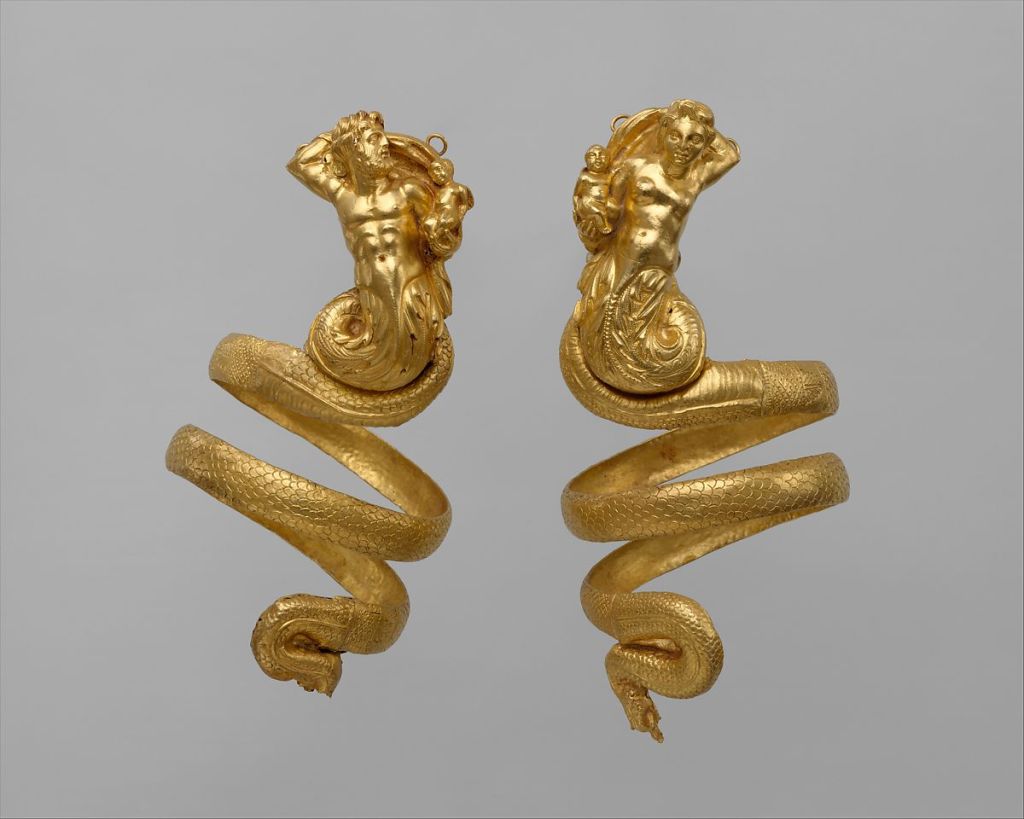
Greek bracelets often featured intricate designs, such as geometric patterns, floral motifs, and mythological symbols, reflecting the artistic prowess and creativity of Greek artisans. Armbands, worn above the elbow, were particularly favored by warriors and athletes, serving as both protective armor and status symbols. Some armbands were adorned with engravings or embossed scenes depicting heroic deeds or mythological narratives, further enhancing their significance.
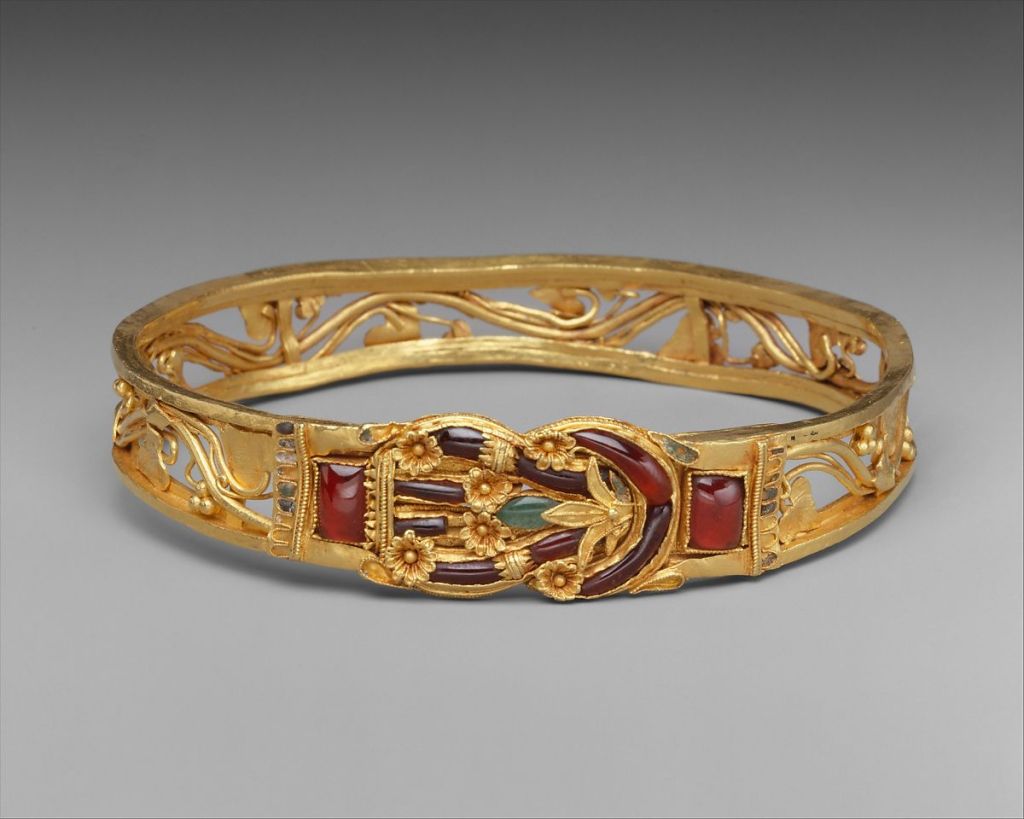
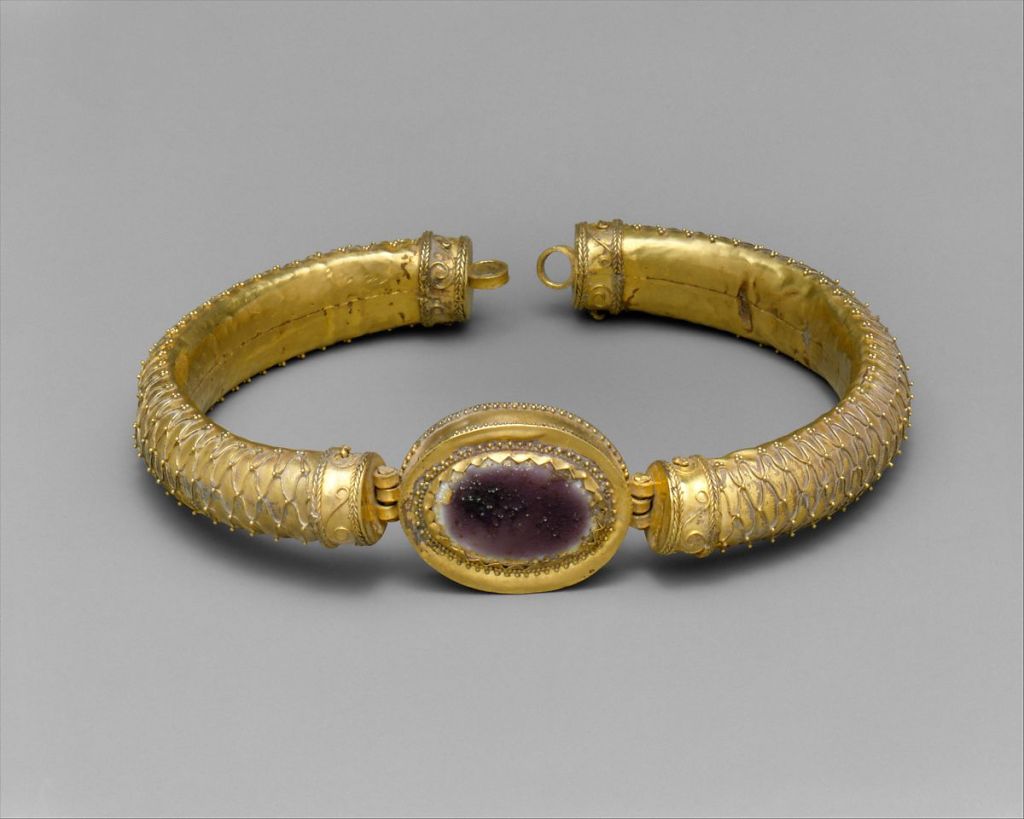
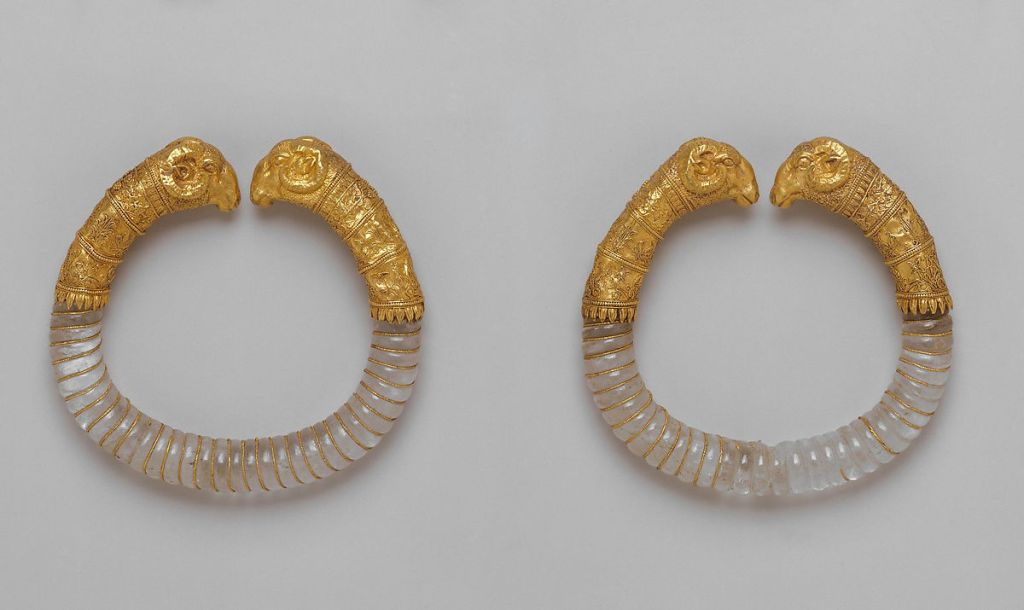
2. Gold and glass bracelet with central medallion, 2nd c. BC. Metropolitan Museum of Art.
3. Pair of bracelets with rock crystal hoops and gold rams’ heads, c. 330-300 BC. Metropolitan Museum of Art.
Earrings
Ancient Greek earrings were exquisite pieces of jewelry that served as symbols of beauty, status, and cultural identity. Crafted with meticulous attention to detail, Greek earrings came in various styles, shapes, and materials, reflecting the artistic diversity of the ancient Greek world.
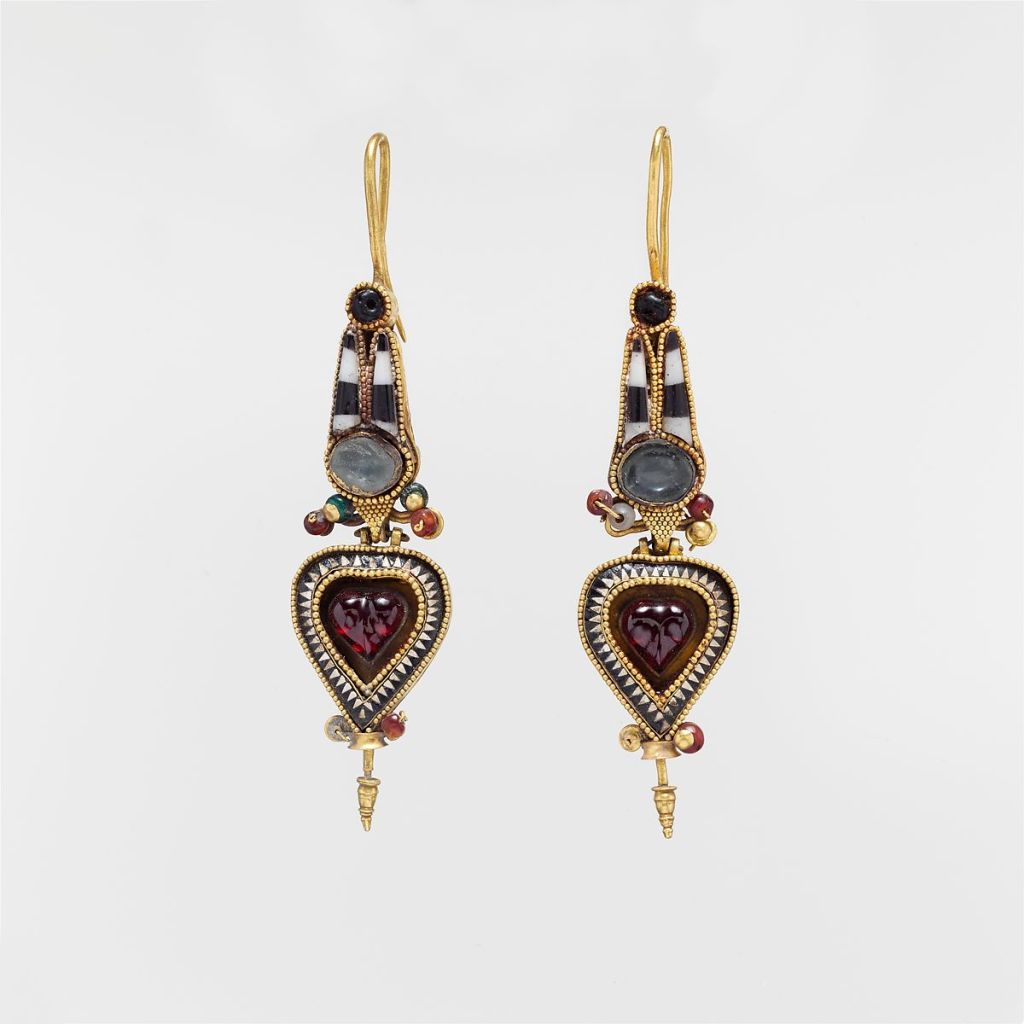
Common materials included gold, silver, bronze, and occasionally precious gemstones like pearls or emeralds. Greek earrings featured intricate designs such as spirals, rosettes, animal motifs, and symbols inspired by mythology and nature. Some earrings were simple studs or hoops, while others were elaborate chandelier-style earrings that cascaded in tiers. Earrings were often worn as everyday accessories but also held ritualistic and symbolic significance, particularly in religious ceremonies and social gatherings. Whether worn for adornment, protection, or religious devotion, ancient Greek earrings were prized possessions that captured the essence of Greek craftsmanship and aesthetic sensibilities.
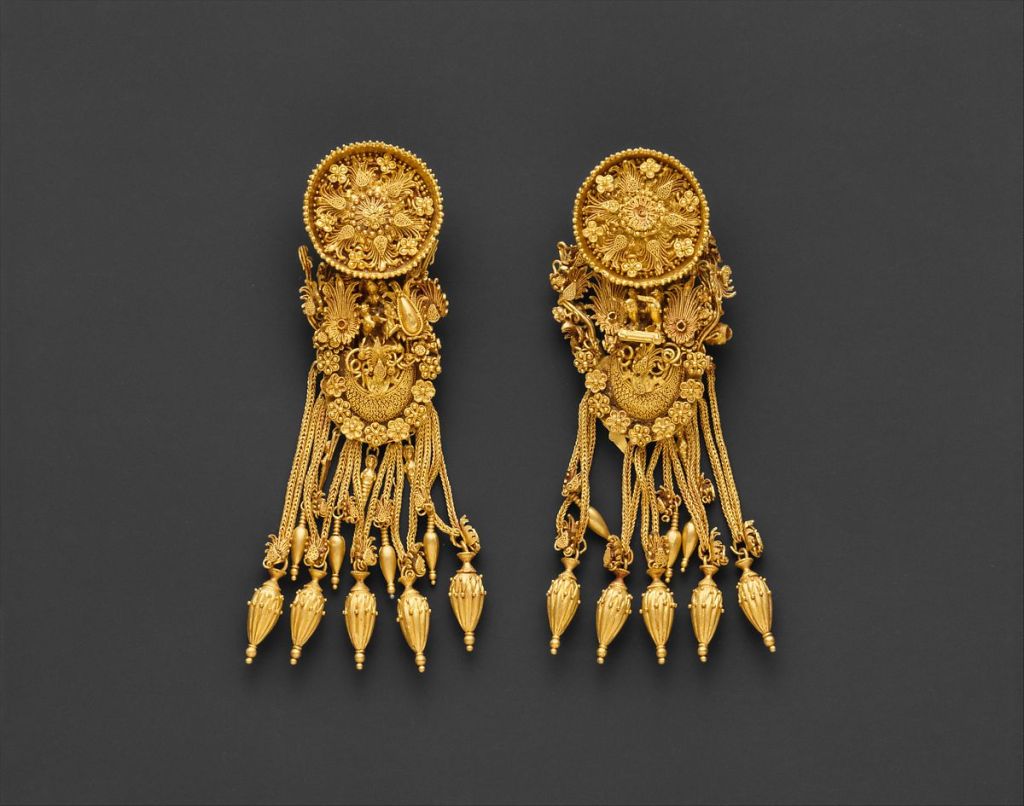
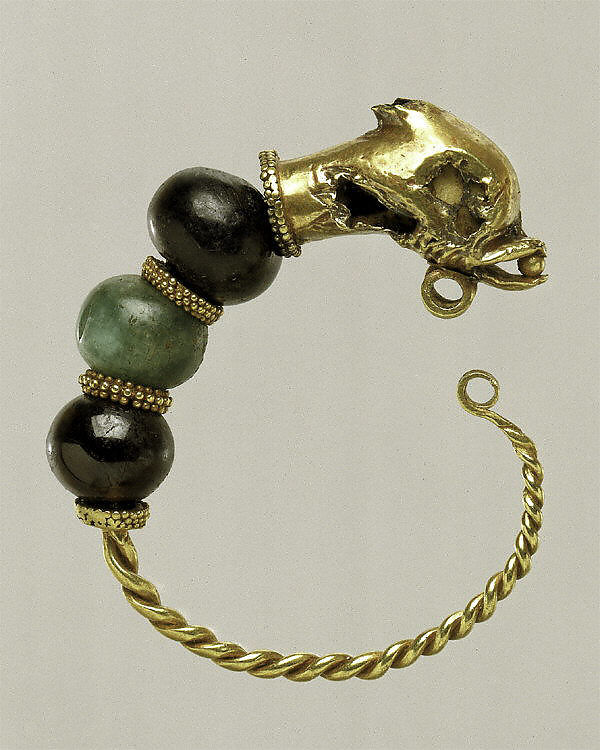
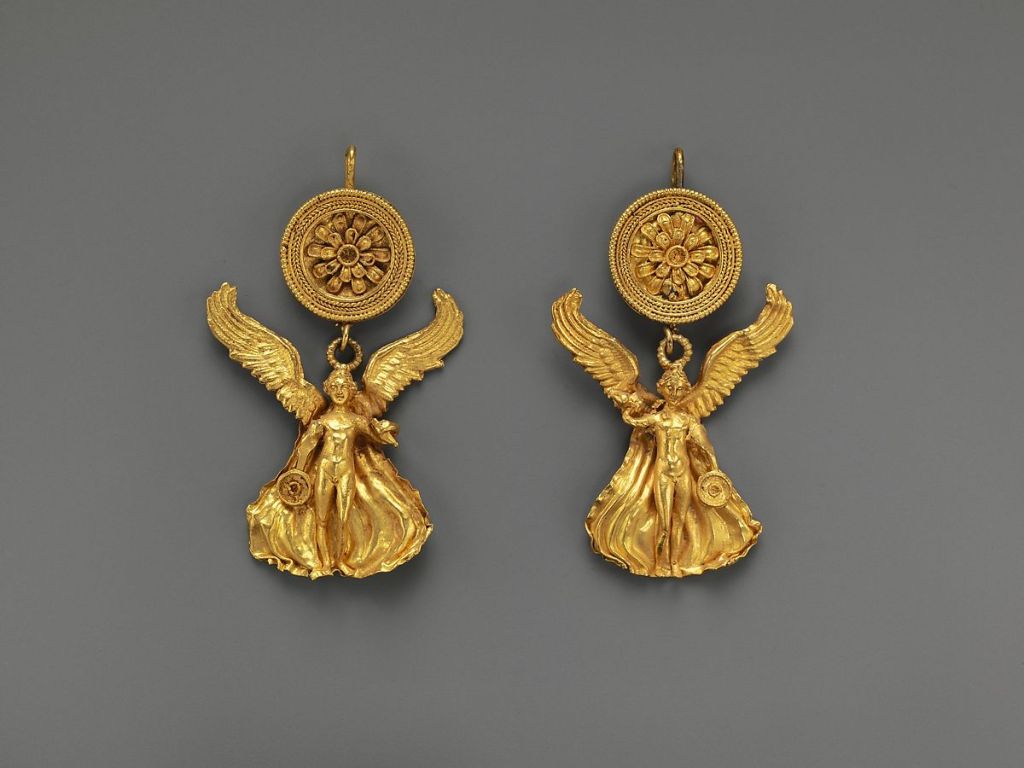

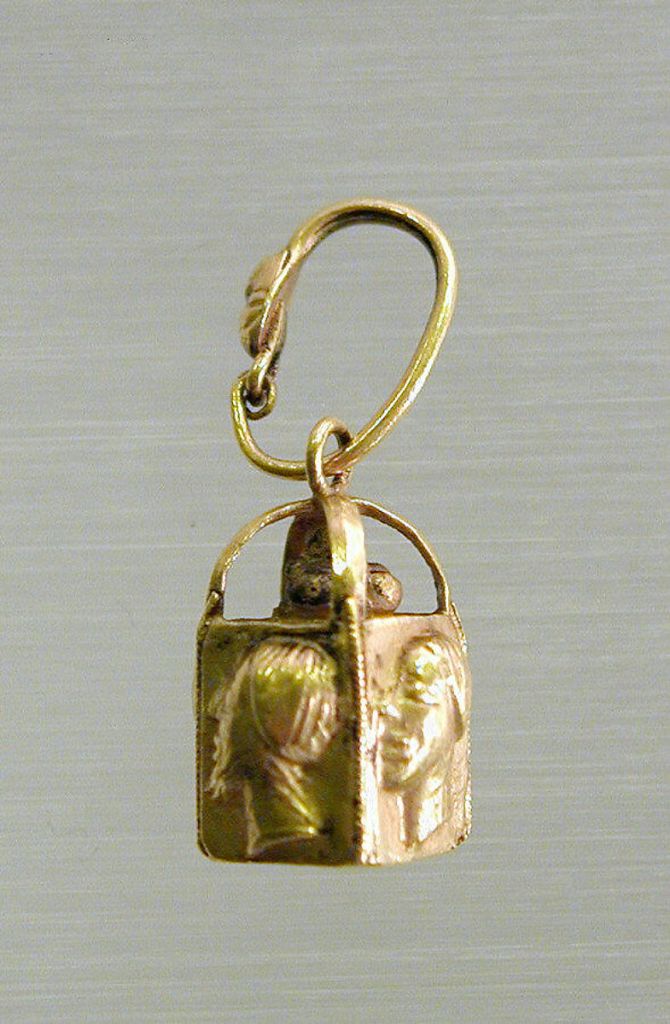
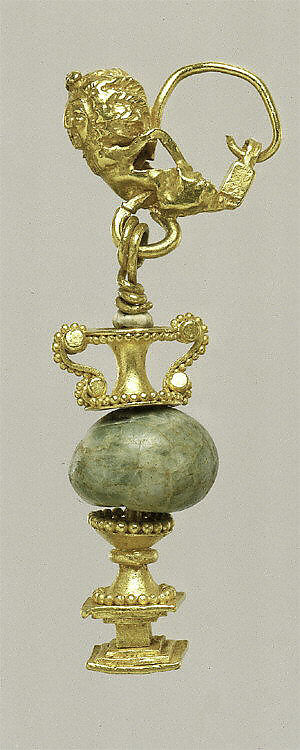
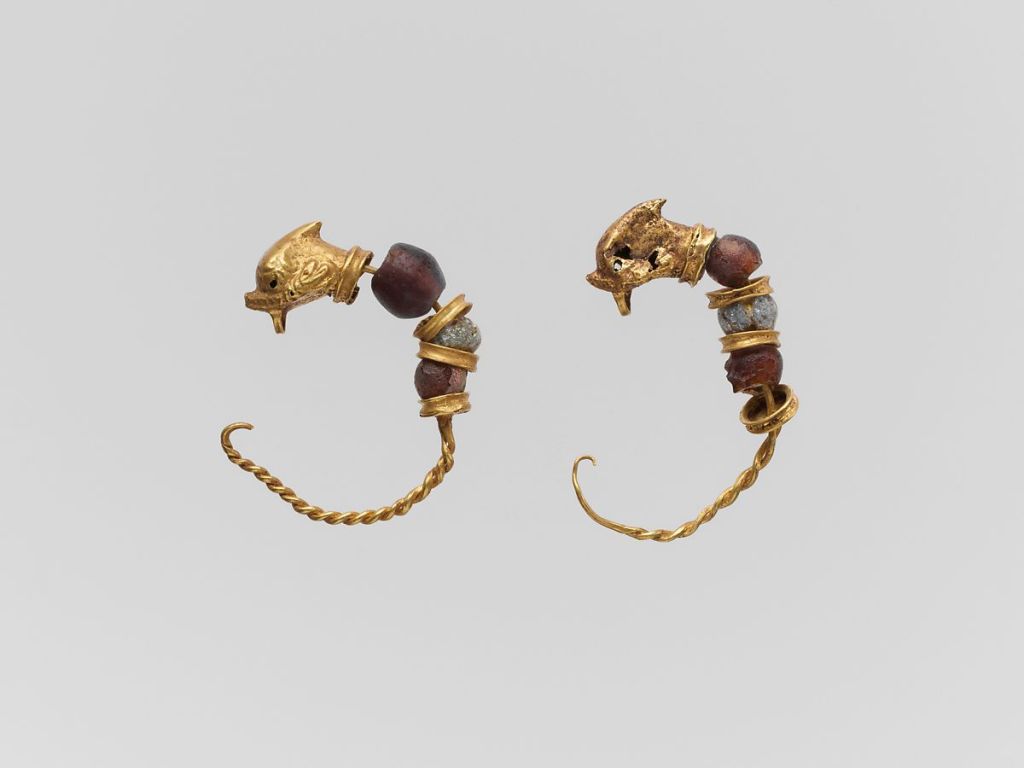
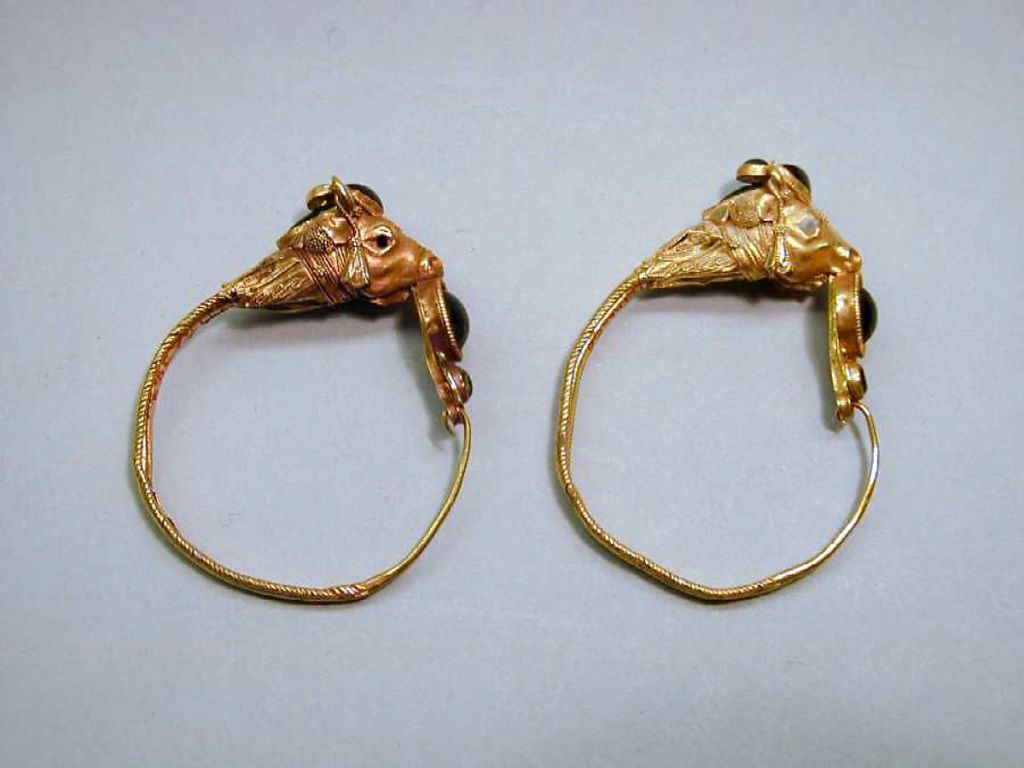
2. Gold, beryl, and garnet earring with head of a dolphin, 2nd-1st c. BC. Metropolitan Museum of Art.
3. Pair of gold earrings with a disk and Eros, c. 300 BC. Metropolitan Museum of Art.
4. Gold and amber earrings with head of a Nubian, c. 200-100 BC. Metropolitan Museum of Art.
5. Gold earring with four relief faces, 4th-3rd c. BC. Metropolitan Museum of Art.
6. Gold and beryl earring, 2nd-1st c. BC. Metropolitan Museum of Art.
7. Gold and glass earring with head of a dolphin, 2nd-1st c. BC. Metropolitan Museum of Art.
8. Pair of gold, garnet, enamel, and glass earrings, 2nd c. BC. Metropolitan Museum of Art.
Headpieces
Ancient Greek headpieces were remarkable pieces of jewelry that adorned the heads of both men and women, adding a touch of elegance and grandeur to their attire. These headpieces ranged from simple bands and wreaths to elaborate diadems and crowns, each reflecting the wearer’s status, social rank, and occasion.
Made from precious metals like gold and silver, as well as adorned with gemstones, pearls, and intricate engravings, Greek headpieces were symbols of wealth, beauty, and divine favor. Diadems, in particular, were popular among royalty and nobility, worn as symbols of authority and power during ceremonies, festivals, and religious rituals. Wreaths made of laurel, olive, or myrtle leaves were commonly worn by athletes, scholars, and victorious warriors as symbols of honor, achievement, and glory.
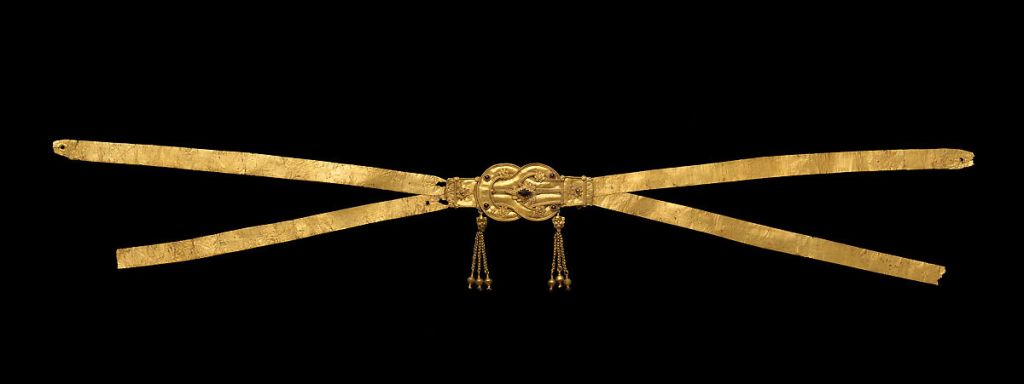
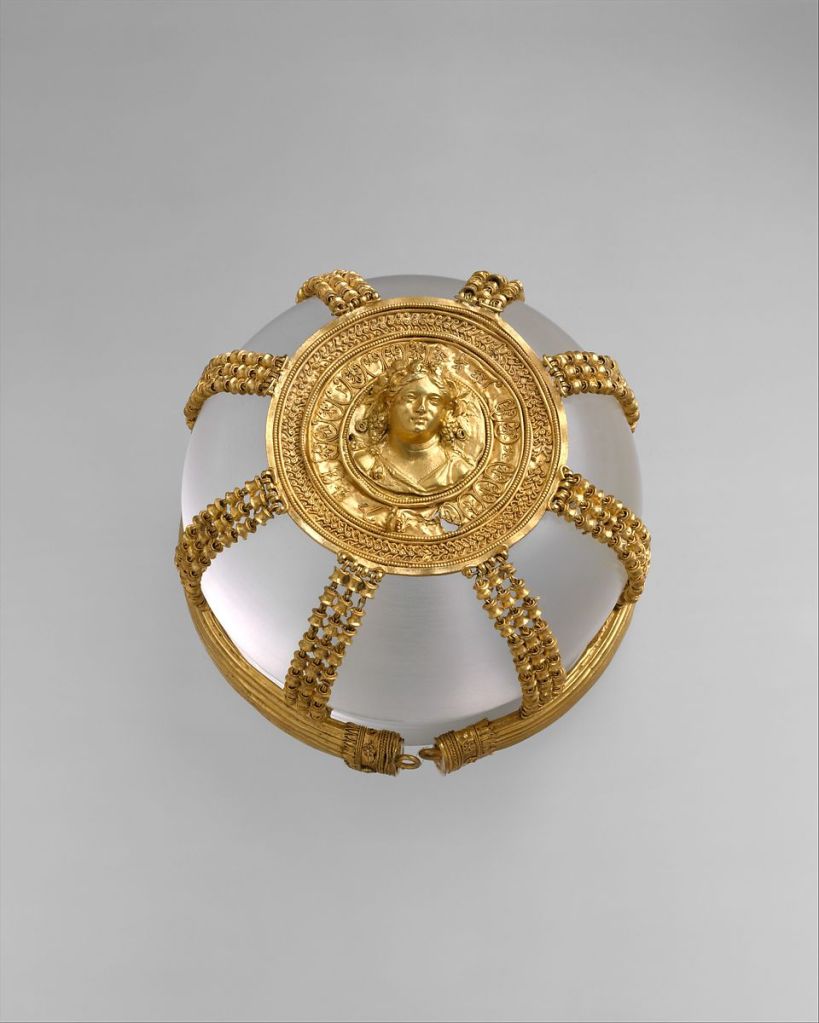
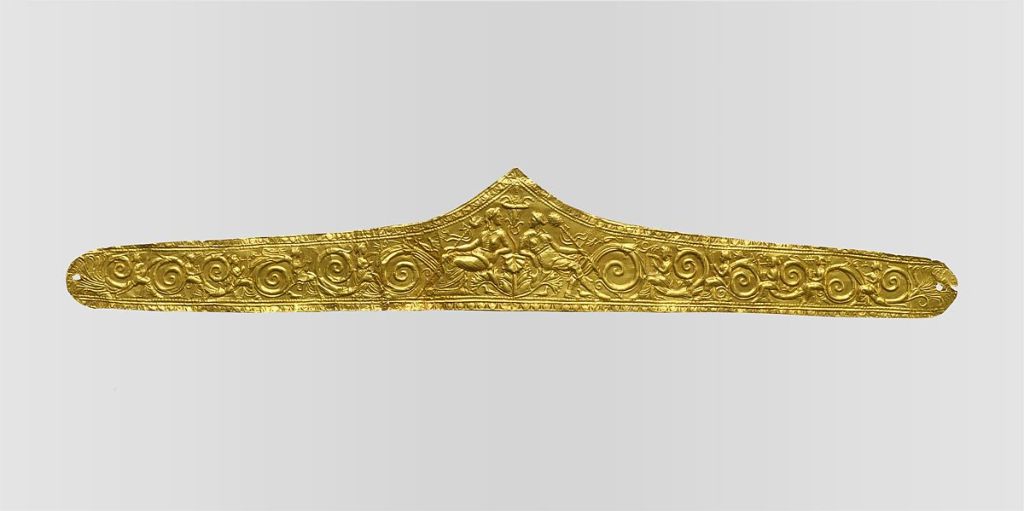
2. Gold openwork hairnet with medallion of Maenad, c. 200-150 BC. Metropolitan Museum of Art.
3. Pediment-shaped gold diadem, c. 330-300 BC. Metropolitan Museum of Art.
Jewellery Sets
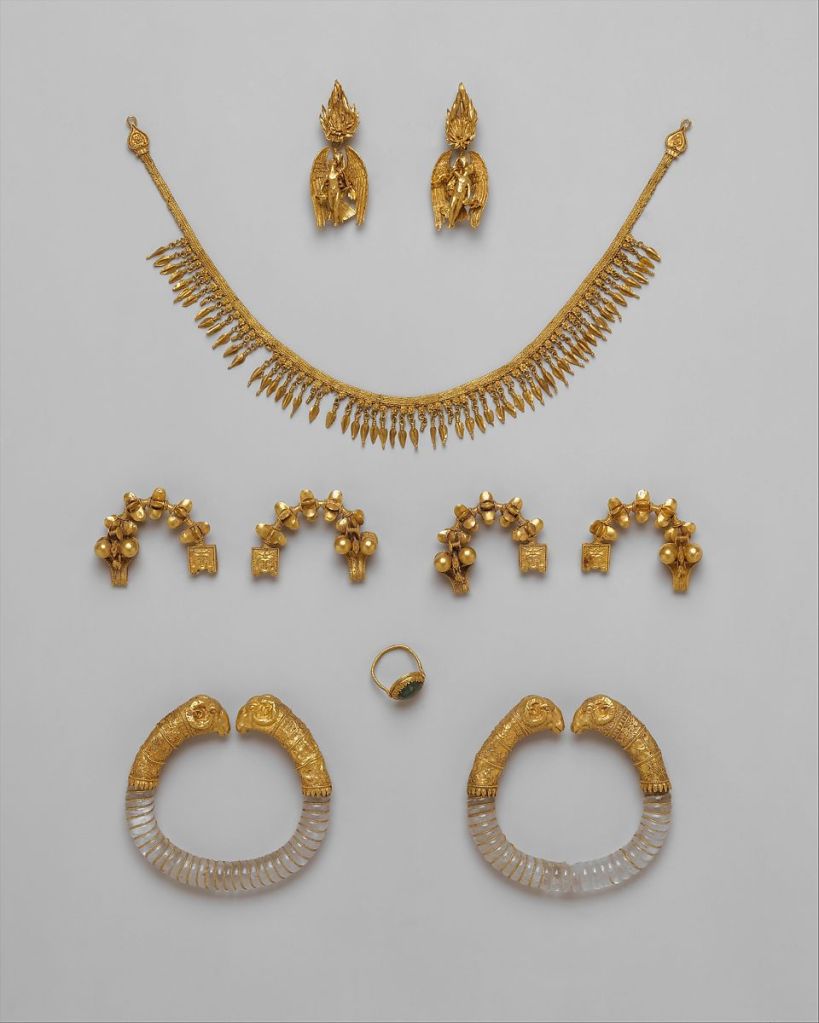
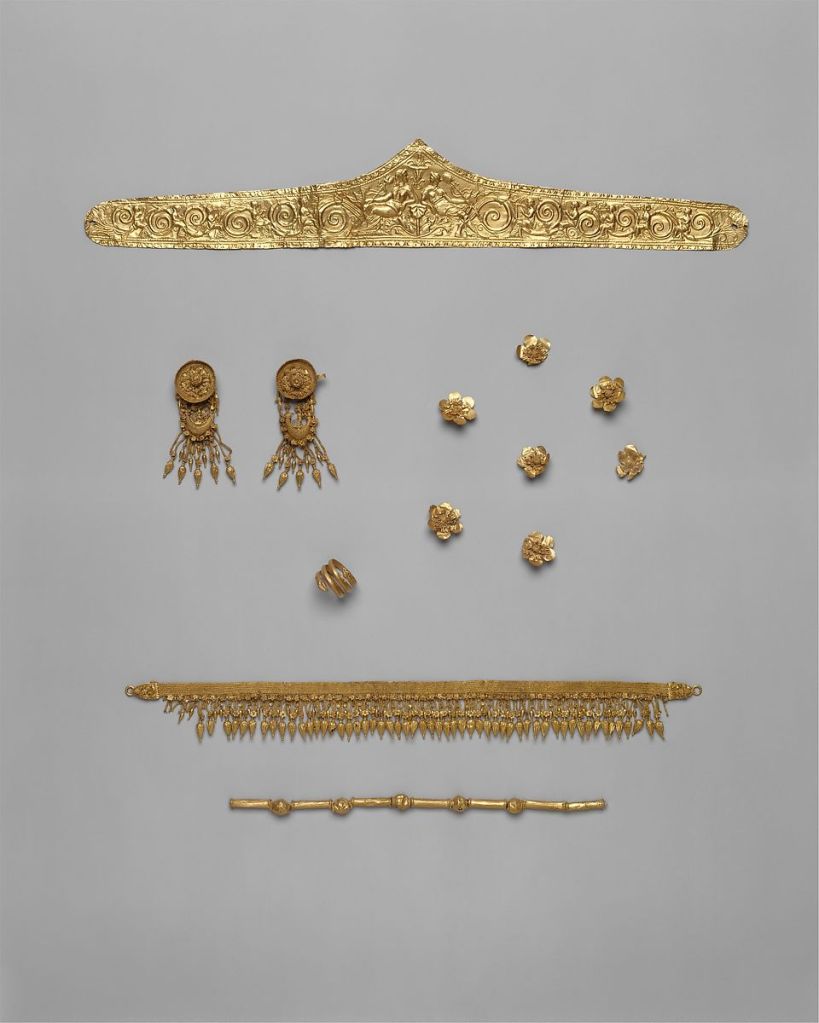
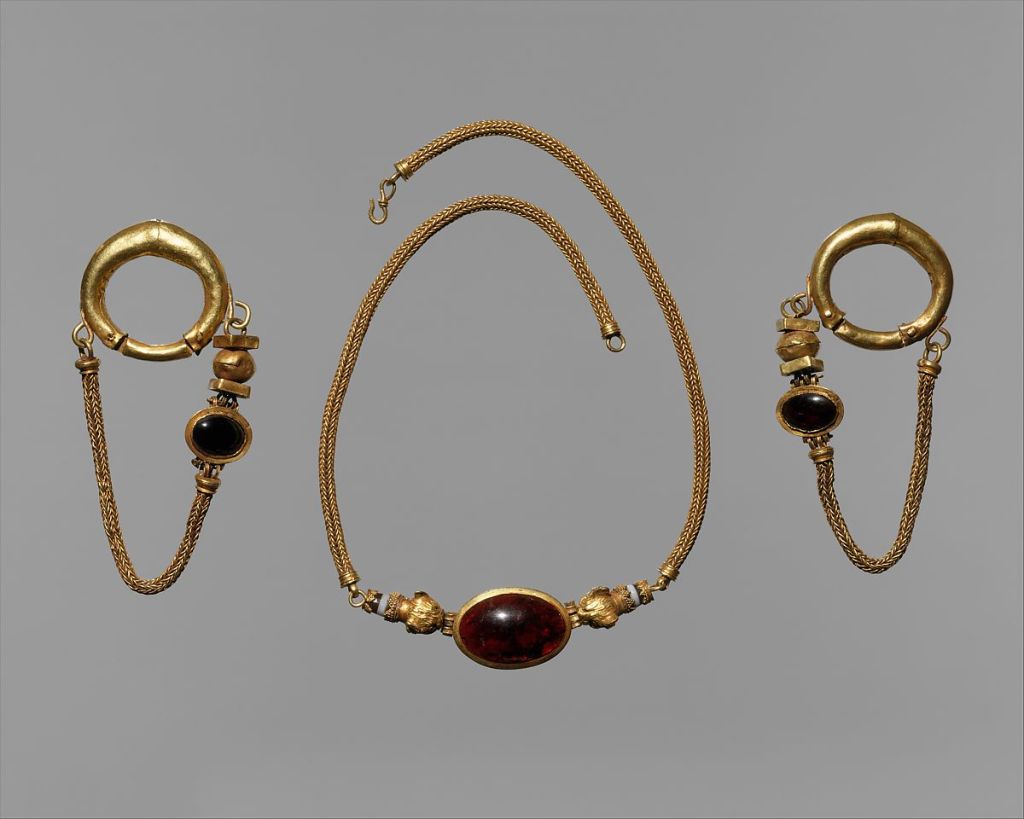
2. Jewellery set from Madytos, c. 330-300 BC. Metropolitan Museum of Art.
3. Jewellery set, 1st c. BC. Metropolitan Museum of Art.
